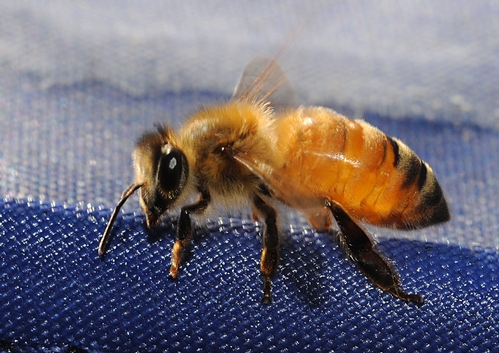It's not just two-legged humans that take a dip in the pool.
So do six-legged honey bees searching for water.
When temperatures soar, honey bees scramble to collect water for their colony. They release droplets of water in the hive as their hardworking sisters fan their wings to "cool it." This airconditioning system works much like a swamp or evaporative cooler.
Usually honey bees seek water from bird baths, fish ponds, streams, fountains, dripping faucets, freshly watered potted plants or sprinkling systems--and sometimes even Uncle John's wet laundry dripping from the clothesline.
Unfortunately, however, bees inadvertently seek another source: swimming pools. They seem to have no depth perception.
Last weekend, scores of bees plopped into our pool. We netted the struggling bees one by one.
One small step...one giant leap...
Almost all of the Apis mellifera we fished out of the pool were Italian--the common amber-colored honey bee that we’re all accustomed to seeing. But one was a Carnolian, a dark honey bee.
The Carnolian looked quite ragged, observed UC Davis bee breeder-geneticist Susan Cobey, manager of the Harry H. Laidlaw Jr. Honey Bee Research Facility, who rears New World Carniolans.
This bee certainly didn't look like a well-groomed bee fresh out of the bee-ty parlor.
To avoid wayward bees, it's a good idea to cover your pool when you're not using it. You can also provide a nearby bee friendly watering device so they'll go there instead of your pool. .
When bees deliver water to the hive, the other bees recognize the source by its scent, said Extension apiculturist Eric Mussen of the UC Davis Department of Entomology faculty.
"They can tell its origin, where that water came from," he said.
All the more reason to provide a better watering hole.
Attached Images:

Carniolan

Recuperating

Italian bee

Up and Over